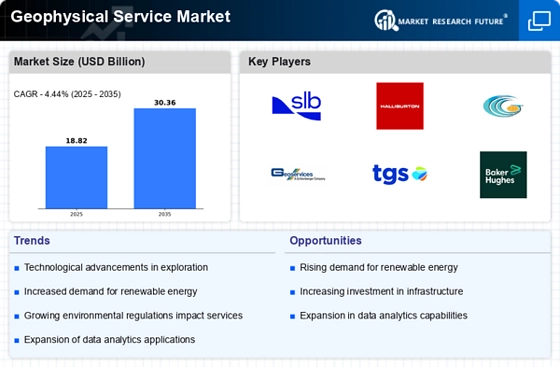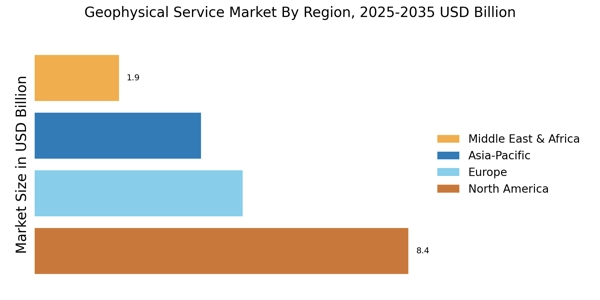Rising Demand for Renewable Energy
The increasing emphasis on renewable energy sources is driving the Geophysical Service Market. As countries strive to meet energy transition goals, the need for geophysical surveys to locate and assess potential sites for wind, solar, and geothermal energy projects is becoming paramount. For instance, the International Energy Agency indicates that investments in renewable energy are expected to reach trillions of dollars in the coming years. This surge in investment necessitates comprehensive geophysical assessments to ensure optimal site selection and resource management, thereby propelling the demand for geophysical services.
Increased Infrastructure Development
The ongoing expansion of infrastructure projects worldwide is a key driver for the Geophysical Service Market. Governments and private entities are investing heavily in transportation, utilities, and urban development, necessitating thorough geophysical investigations to ensure safety and compliance. For example, the construction of new highways, bridges, and tunnels requires detailed subsurface information to mitigate risks associated with geological hazards. The market for geophysical services is expected to grow as these infrastructure projects demand precise geotechnical data, thereby creating a robust demand for geophysical expertise.
Advancements in Geophysical Technologies
Technological innovations are reshaping the Geophysical Service Market, enhancing the accuracy and efficiency of geophysical surveys. The advent of advanced imaging techniques, such as 3D seismic imaging and drone-based surveys, allows for more detailed subsurface analysis. According to recent data, the market for geophysical equipment is projected to grow significantly, driven by these technological advancements. These innovations not only improve data quality but also reduce operational costs, making geophysical services more accessible to a wider range of industries, including oil and gas, mining, and environmental assessments.
Environmental Regulations and Compliance
Stringent environmental regulations are influencing the Geophysical Service Market, as companies seek to comply with legal requirements for environmental assessments. The need for environmental impact studies has become increasingly critical, particularly in sectors such as mining and construction. Regulatory bodies often mandate geophysical surveys to evaluate potential environmental impacts before project initiation. This trend is likely to drive the demand for geophysical services, as organizations prioritize compliance and sustainability in their operations, thereby fostering a more responsible approach to resource extraction and land use.
Exploration Activities in Emerging Markets
The exploration of natural resources in emerging markets is a significant driver for the Geophysical Service Market. As countries in Africa, Asia, and South America seek to tap into their mineral and energy resources, the demand for geophysical surveys is expected to rise. These regions often possess untapped reserves, and geophysical services play a crucial role in identifying and evaluating these resources. The potential for economic growth in these areas is substantial, and as investments increase, so too will the reliance on geophysical expertise to guide exploration efforts.


















Leave a Comment